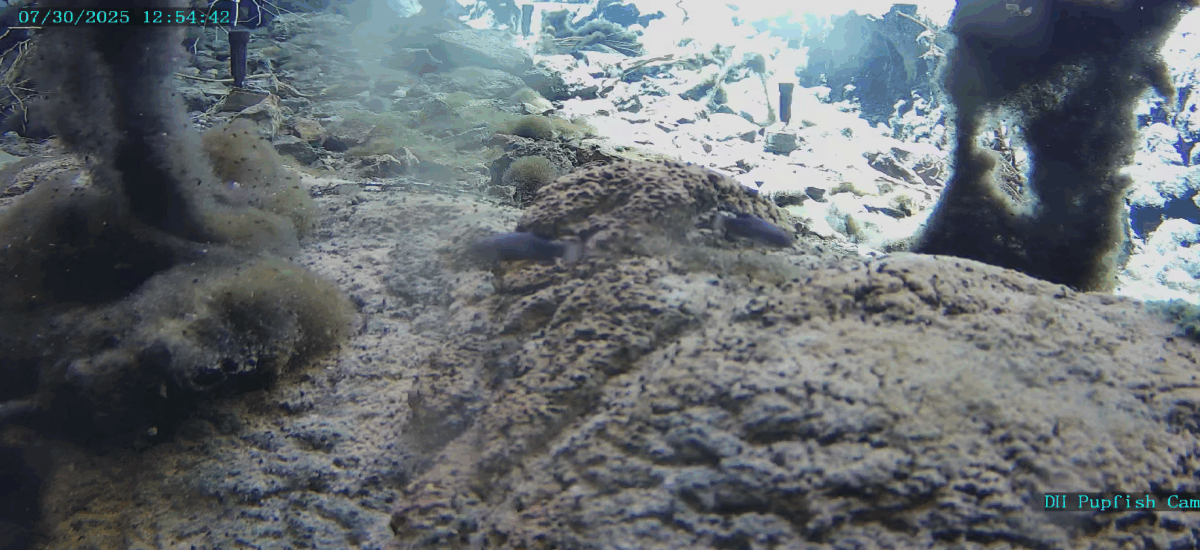A powerful 8.8 magnitude earthquake that struck near Russia’s Kamchatka Peninsula on July 29 sent ripples nearly 4,000 miles across the Pacific, disturbing one of the most fragile ecosystems in the United States: Devils Hole in Nevada’s Mojave Desert, according to park officials.
The quake generated 10-inch waves inside the narrow, water-filled cavern—a dramatic but not unprecedented event for the critically endangered Devils Hole pupfish (Cyprinodon diabolis), which rely on a shallow limestone shelf to spawn and feed. With only 38 fish counted during the March 2025 survey, any disturbance can have outsized consequences.
The July waves removed some sediment and algae from the shelf, but park officials say the damage was limited. “The waves generated by this earthquake were smaller than those from the previous quakes,” the National Park Service (NPS) noted in a recent release. “Conditions are favorable for algae regrowth.”

This cautious optimism comes after a brutal spring. A December 2024 earthquake off Humboldt County and a second in February 2025 each triggered sloshing waves that wiped out larvae, eggs, and algae in Devils Hole. Those events are believed to have caused the steep population drop from 191 pupfish in spring 2024—a 25-year high—to just 38 a year later.
In response, biologists from the NPS, U.S. Fish and Wildlife Service, and Nevada Department of Wildlife implemented emergency actions outlined in the 2022 Devils Hole Pupfish Strategic Plan. Nineteen captive-raised pupfish were reintroduced from a backup colony at the Ash Meadows Fish Conservation Facility, likely preventing the population from dipping below the record low of 35 fish in 2013.
“This population is incredibly vulnerable,” said Michael Schwemm, senior fish biologist for USFWS. “The present size at near-record lows deserves our serious attention.”
 Despite the setbacks, pupfish often increase their spawning after disturbances—a quirk that offers a sliver of hope. Biologists observed spawning behavior this spring, and sunlight during summer months is expected to stimulate algae recovery. Supplemental feedings continue to support the population during periods of low productivity.
Despite the setbacks, pupfish often increase their spawning after disturbances—a quirk that offers a sliver of hope. Biologists observed spawning behavior this spring, and sunlight during summer months is expected to stimulate algae recovery. Supplemental feedings continue to support the population during periods of low productivity.
For now, the fish persist. But long-term threats remain. The Devils Hole pupfish are confined to a rock shelf barely the size of a compact parking space. Climate change, groundwater depletion, and genetic bottlenecks further jeopardize their survival.
“The pupfish is an indicator of the health of the larger ecosystem,” said Kevin Wilson, an NPS ecologist. “By protecting this tiny fish, we’re protecting the aquifer and the entire web of life that depends on it.”

The next population count is scheduled for fall 2025. Conservationists hope it will bring better news.
Banner image: Devils Hole pupfish in the Ash Meadows Fish Conservation Facility. Photo by Olin Feuerbacher/USFWS




